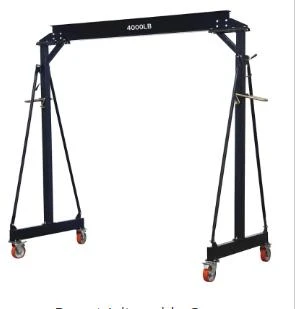Heavy Equipment Transport Solutions Using Rollers for Efficient Movement
Rollers for Moving Heavy Equipment An Essential Tool for Efficiency and Safety
Moving heavy equipment is a common challenge in various industries, from construction and manufacturing to logistics and warehousing. The process requires not only physical strength but also the right tools to ensure safety and efficiency. Among these tools, rollers have emerged as a vital resource for transporting bulky machinery and heavy loads smoothly and securely.
Understanding Rollers
Rollers are cylindrical devices designed to facilitate the movement of heavy equipment across different surfaces. They come in various sizes and materials, often made from steel or durable plastics, depending on the intended use and weight of the equipment being moved. The primary purpose of rollers is to reduce friction, allowing heavy items to glide with less effort. This is particularly beneficial in workplaces where manually lifting or carrying equipment could lead to injuries and accidents.
Benefits of Using Rollers
1. Enhanced Safety One of the paramount advantages of using rollers is improved safety. Heavy equipment can pose significant risks due to its weight and bulk. Rollers minimize the risk of injury by allowing workers to transport heavy items with the help of mechanical means instead of relying solely on physical strength. This is crucial in preventing musculoskeletal injuries, which are prevalent in industries involving heavy lifting.
2. Increased Efficiency Rollers expedite the movement of heavy equipment, which can significantly enhance productivity. In construction sites, for instance, quickly relocating machinery can reduce downtime and allow for faster project completion. The ability to move large items smoothly can streamline workflows and make operations more efficient.
3. Versatility Rollers can be used on various surfaces and are adaptable to different kinds of equipment. From forklifts to large engines, rollers can assist in moving virtually any heavy load. This versatility makes them an indispensable tool in diverse environments, whether on a construction site, factory floor, or warehouse.
4. Cost-Effectiveness While there might be an initial investment in purchasing quality rollers, the long-term benefits far outweigh the costs. By minimizing the risk of workplace injuries, businesses can save significantly on medical expenses, insurance premiums, and lost labor time. Additionally, faster transport of equipment can lead to more efficient operations and potentially increased profit margins.
rollers for moving heavy equipment

Choosing the Right Rollers
When selecting rollers for moving heavy equipment, several factors must be considered
- Load Capacity Always ensure that the rollers can support the specific weight of the equipment being moved. Each roller has a defined load capacity, and exceeding that can lead to failures and accidents.
- Surface Compatibility The type of surface on which the rollers will be used is essential. Some rollers are designed for smooth concrete floors, while others may be suitable for rough outdoor terrains.
- Material The material of the rollers impacts their durability and performance. Rubberized rollers may provide better grip and reduce damage to the flooring, while metal rollers might be more suitable for heavier loads.
- Size and Shape Depending on the equipment’s dimensions, the size and shape of the rollers should be considered to ensure ease of use and maneuverability.
Conclusion
In conclusion, rollers for moving heavy equipment play an essential role in enhancing safety, improving efficiency, and facilitating the smooth relocation of heavy machinery in various industries. With careful selection based on load capacity, surface compatibility, and material, businesses can make informed choices that not only protect their workforce but also promote operational efficiency. As industries continue to evolve and grow, tools like rollers will remain invaluable assets in the quest for safety and productivity.
-
Unlock Seamless Relocation with Our Heavy Equipment Moving ExpertiseNewsJun.06,2025
-
Unleash Unrivaled Flexibility with Our Adjustable Gantry CraneNewsJun.06,2025
-
Unleash Heavy-Duty Efficiency with Our Industrial Gantry Crane SolutionsNewsJun.06,2025
-
Revolutionize Steel Handling with Our Magnetic Lifter RangeNewsJun.06,2025
-
Master Equipment Mobility with Premium Machinery Mover SolutionsNewsJun.06,2025
-
Elevate Your Material Handling with Magnetic Lifter TechnologyNewsJun.06,2025
-
YS Permanent Lifting Magnets: The Smarter Way to Handle SteelNewsMay.22,2025
